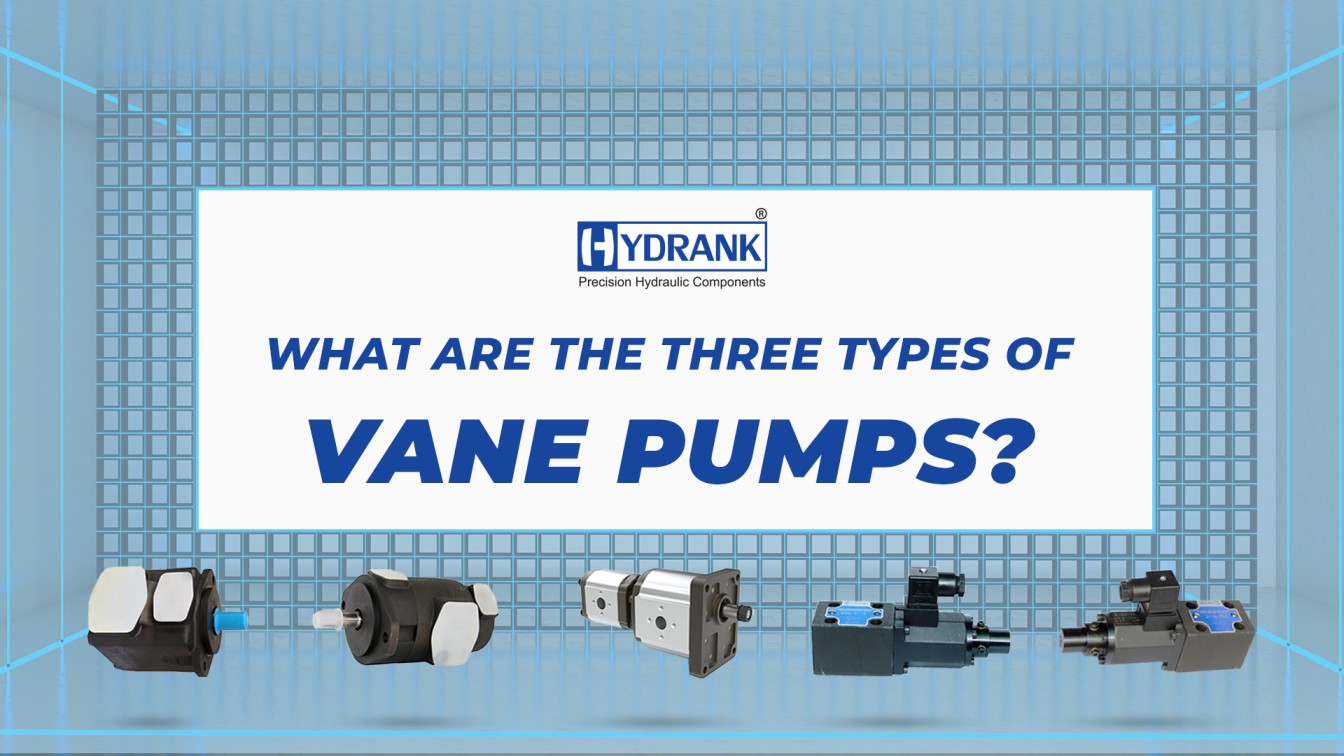-
What Are The Three Types of Vane Pumps?

Vane pumps are positive displacement pumps and are widely used in various applications, including automotive systems, power steering mechanisms, and air conditioning systems. They demonstrate proficiency in handling fluids with intermediate viscosity levels and are particularly effective with low-viscosity liquids. These pumps play a crucial role in transforming high-pressure gas into low-pressure gas. Let’s Discover What are the three types of vane pumps
Three Types of Vane Pumps
Vane pumps are categorized into three main types:
- Unbalanced Vane Pumps
- Balanced Vane Pumps
- Variable Displacement Vane Pumps
These vane pumps operate on the positive displacement principle, utilizing vanes attached to a rotor to elevate fluid pressure. The vanes in vane pumps can vary in length or be tensioned to ensure continuous contact with the pump wall as they rotate. Each of the three types of vane pumps offers distinct advantages and applications.
Let’s discuss Three Types of Vane Pumps in detail.
Unbalanced Vane Pumps
These pumps consist of a cylindrical rotor positioned off-center within a circular housing, meaning the center’s of the rotor and the housing do not align. There is a noticeable gap between the Centre of the casing and that of the rotor. This design ensures no leakage occurs between the housing and the vane tip. However, due to pressure differences between the intake and exhaust ports, a lateral thrust is exerted on the rotor shaft, diminishing the bearing’s lifespan. These vane pumps are called “unbalanced vane pumps” due to the pressure fluctuations between the inlet and outlet ports, resulting in a side force on the rotor shaft. In contrast, balanced vane pumps do not experience lateral forces on the rotor shaft.
Balanced Vane Pumps
Balanced rotary vane pumps feature an elliptical casing that shares the same centre as the rotor, eliminating any offset. These vane pumps are engineered for versatility and are commonly employed in mobile and industrial settings. They possess two inlet ports and an outlet, ensuring no pressure differential between the inlets and outlets. The two intake ports, as are the outlet ports, are positioned diametrically opposite each other. This configuration enables the intake and outlet port arrangement to balance and counteract thrust forces, thereby preventing the rotor shaft from experiencing lateral thrust. These balanced vane pumps deliver exceptional performance and have a prolonged service life across various applications, with industrial applications achieving more than 24,000 hours of operation. The cavity between the two vanes diminishes in size from intake to exhaust, facilitating fluid flow from the intake port to the outlet port. Notably, the rotor operates under high pressure in the outlet area, with forces in the two outlet zones being equal and opposite, thus imposing no net load on the shaft’s bearings.
Variable Displacement Vane Pumps
These pumps offer the flexibility to adjust the pocket size, resulting in varying delivery rates based on the pocket size alterations. In these vane pumps, the vanes do not directly contact the pump housing; instead, a ring, known as the response ring, acts as a separator between the vane and the casing. One end of this response ring is connected to a spring, while the other is linked to an adjusting screw. The adjusting screws are responsible for modifying the size of the pump pocket. When the adjustment screw initiates rotation, the response ring moves vertically. Consequently, the offset between the rotor centre and the response ring centre fluctuates as the response ring moves up and down. These offset changes impact the pocket size, consequently influencing the pump’s delivery flow rate.
Components of Vane Pump
- Casing: The casing, also known as the outer covering of the pump, encapsulates all other vane pump components. It consists of two key parts:
- Inlet Port: This is where fluid enters the pump.
- Outlet Port: The high-pressure fluid exits the pump through the outlet port.
- Shaft: Inside the vane pump is a shaft connected to a prime mover. A rotor is mounted on this shaft and rotates using the power the prime mover generates.
- Rotor: The rotor of vane pumps features equally spaced slots arranged around its circumference. These radial slots accommodate sliding vanes.
- Sliding Vanes: Sliding vanes are housed within the rotor slots and move freely. They have a rectangular shape and are affixed to the rotor using springs.
- Cam Ring: The cam ring is situated on the inner wall of the casing. It plays a crucial role in the operation of the vane pump.
In Conclusion
A vane pump is a specific type of positive displacement rotary pump derived from the vane-driven fluid pressurization mechanism. While vane pumps are not ideal for highly viscous fluids, they excel at handling low to medium-viscosity liquids, including those containing entrained gases, often resulting in a smooth, low-pulsation output. There are three primary categories of vane pumps: unbalanced, balanced, and variable displacement vane pumps. Pressure differentials between inlet and outlet valves commonly characterize unbalanced vane pumps. In contrast, balanced vane pumps offer extended service life and durability.
India's Largest Hydraulic Vane Pump Supplier
contact us: +91 98989 09148
Delivery
Prompt and accurate delivery
Client Servicing
Pro after-sales customer support
Quality assurance
Top quality standards
Export
More then 10 countries
